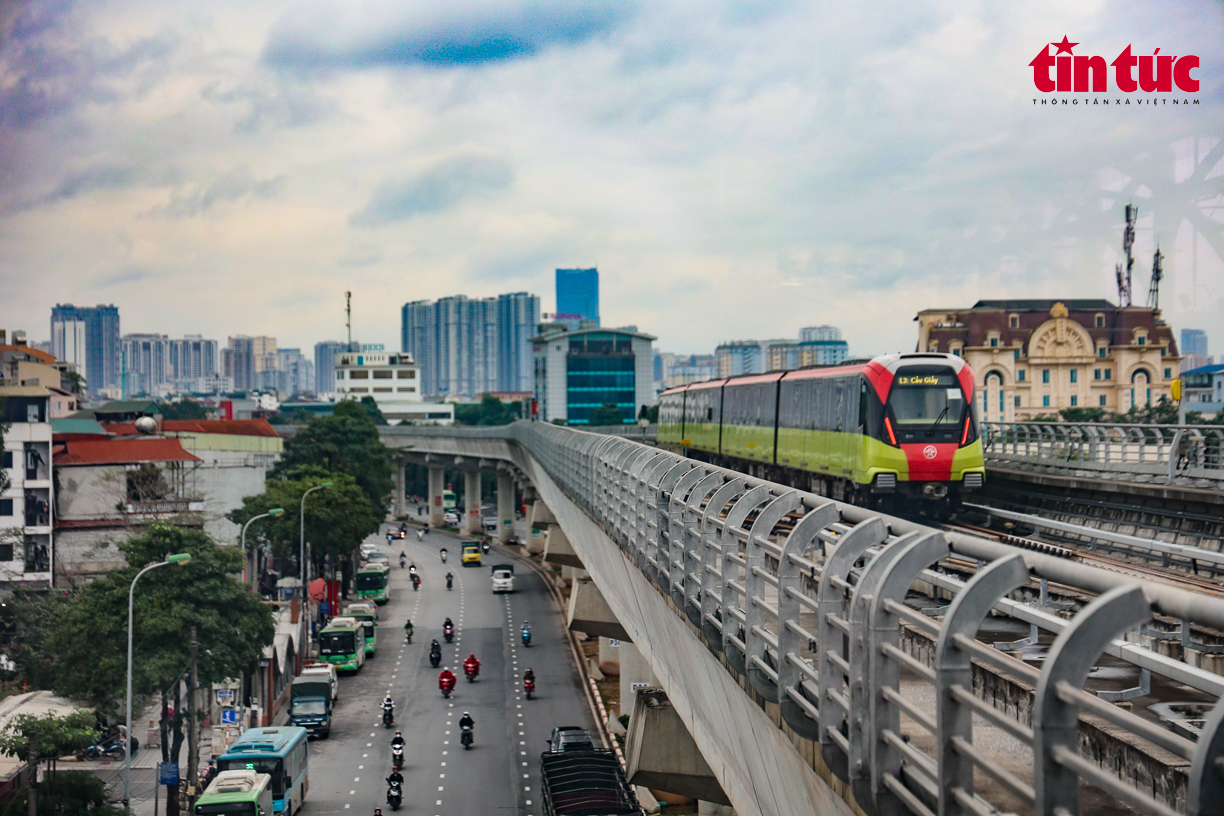
The Nhon – Hanoi Railway Project. Photo: Trung Nguyen/Tin Tuc Newspaper
Previously, the Hanoi Metropolitan Railway Management Board submitted a proposal on the master plan for the construction of the capital’s metropolitan railway, setting the goal of completing the metropolitan railway network in Hanoi by 2035.
The master plan for the construction of the capital’s metropolitan railway aims to summarize the implementation of the investment in the metropolitan railway system in the past, serving as a basis for proposing development orientations, pilot and specific mechanisms and policies for investing in the development of Hanoi’s metropolitan railway network.
The proposal unifies the perception of the role of the metropolitan railway as the “backbone” of the city’s transport infrastructure. Developing the metropolitan railway system is an objective necessity and an important driving force for the city’s socio-economic development strategy in the coming time. Developing the metropolitan railway is closely associated with urban development, environmental protection, and the promotion of industrialization and modernization, creating a driving force for the development of the capital region.
Along with that, it is necessary to unify the perception and action of the entire political system in mobilizing the maximum appropriate resources to focus on investment, soon completing a modern, synchronous, and sustainable metropolitan railway network; in which, the state budget will play a dominant and decisive role in investing in the entire metropolitan railway system by 2035 and building and implementing synchronous mechanisms and policies to accelerate the progress of investing in the construction of the capital’s metropolitan railway system.
The plan also sets specific goals that by 2025, the construction of Line 2, from Nam Thang Long to Tran Hung Dao, will be implemented. The work of formulating investment proposals for metropolitan railway routes with an investment roadmap before 2030 will be deployed. The construction of a resolution on mechanisms and policies specific to metropolitan railways to speed up the preparation and implementation of investment in the capital’s metropolitan railway network will be completed and submitted for approval.
By 2030, about 96.8/397.8 km (accounting for 24%) of the remaining routes of the capital’s metropolitan railway network at that time will be strived to be built and put into operation. At the same time, the work of formulating investment proposals and deploying the construction of metropolitan railway routes with an investment roadmap before 2035 will be implemented. By 2045, the construction of additional metropolitan railway routes according to the adjusted Master Plan for the Capital will be completed.
In addition, propose “superior” and “breakthrough” mechanisms and policies to accelerate investment preparation procedures and implement investment to complete the metropolitan railway system in Hanoi by 2035 according to Conclusion No. 49-KL/TW dated February 28, 2023 of the Politburo. Submit to the Politburo for approval and the National Assembly for ratification as a basis for implementing all routes of the city’s metropolitan railway network (according to the current planning, updated to be suitable for the Master Plan for the Capital, which is being reviewed and adjusted).
According to the Hanoi Capital Planning for the period of 2021 – 2030, with a vision to 2050, which has been approved, Hanoi will have specific mechanisms to accelerate the progress of constructing 14 metropolitan railway routes with a total length of 550 km. This metropolitan railway system is identified as the “backbone” of urban transport.
With the planning of 14 metropolitan railway routes by 2050, Hanoi expects this network to help people move to all locations in the city and be capable of replacing personal transport vehicles.












